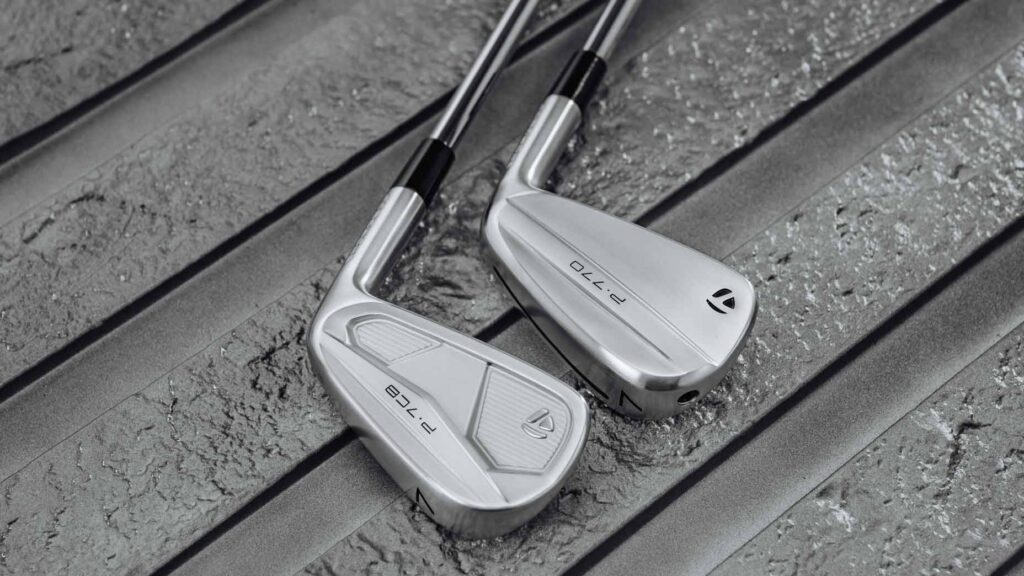Are Golf Club Makers Creating a New Iron Category? Insights from GOLF’s Fully Equipped Podcast
In the ever-evolving world of golf, the innovations produced by original equipment manufacturers (OEMs) often set the stage for discussions about the future of the game. On the latest episode of GOLF’s Fully Equipped podcast, hosts Johnny and Jake dive deep into the intriguing question: Are golf club makers creating a new category of irons? This discussion not only captures the imagination of avid golfers but also reflects the latest trends in club design and technology.
Understanding the Current Iron Landscape
To grasp the potential emergence of a new category, we need to consider the current offerings in the market. Traditionally, golf irons have been categorized into blades, game improvement, and super game improvement clubs. Blades are favored by skilled players seeking precision, whereas game improvement clubs are designed to offer forgiveness and distance. As technological advancements continue to reshape these classifications, many industry insiders are aiming to redefine what golfers expect from their clubs.
Technological Innovations Driving Change
At the core of this conversation is the rapid pace of technological innovations being introduced by golf manufacturers. Companies like TaylorMade and Callaway are heavily investing in research and development, leading to breakthroughs in materials and design. From advanced face technologies to innovative weighting systems, these changes are not just incremental; they’re fundamentally altering how irons perform. This evolution invites players to reconsider their preferences and perhaps necessitates a reevaluation of current categories.
The Role of Consumer Feedback
Consumer feedback plays a crucial role in the golf club manufacturing process. As golfers become more knowledgeable and discerning about their equipment, OEMs are increasingly listening to what players want. Features such as improved feel, enhanced forgiveness, and versatile performance are consistently top of mind for today’s golfers. This shifting landscape suggests that manufacturers may respond by developing entirely new categories to meet these demands.
The Emergence of the ‘Player’s Distance Iron’
One term that has gained traction in discussions about new iron categories is the "player’s distance iron." This category aims to bridge the gap between traditional player’s clubs and game improvement designs. Equipped with features that enhance distance without sacrificing control, these irons cater to a broader range of golfers, from low handicappers to mid-handicappers seeking more distance. This hybrid offering reflects how manufacturers are blending technologies to create something novel, possibly signaling a new classification.
Impact of Marketing and Branding
Marketing strategies also play a crucial role in the categorization of golf clubs. As manufacturers develop new technologies and innovations, they often create unique branding to distinguish their products. This process can lead to the emergence of new categories that capitalize on the latest trends. As a result, golfers are not just purchasing clubs; they’re investing in experiences defined by the narratives created by these brands. The way these clubs are marketed can significantly influence consumer perception and acceptance of new categories.
Testing and Community Insights
Another dimension in the potential emergence of new iron categories is community insights gained through testing. Forums, social media, and events allow golfers to share their real-world experiences with different clubs. This grassroots feedback loop is essential in shaping how companies perceive the success or failures of their products. As golfers discuss their preferences online, it creates a collaborative environment that may lead to the recognition of new categories in the marketplace.
Rethinking Skill Levels and Equipment Choices
As golf becomes more inclusive and diverse, it’s essential to rethink how skill levels intersect with club choices. Many golfers are moving beyond traditional handicaps and experimenting with a wider array of equipment. Clubs that were once deemed suitable only for advanced players are now being embraced by those with varying levels of experience. This shift suggests that the boundaries of existing categories may blur as golfers seek clubs that align better with their current playing style, further prompting the need for a reevaluation of classifications.
The Future of Iron Designs
Looking ahead, the future of iron designs promises to be exciting. As clubs become increasingly personalized, the idea of a standardized category may become obsolete. Custom-fitting options and personalized designs are on the rise, allowing golfers to optimize their equipment to match their unique swings and preferences. This trend indicates a move toward more individualized categories, where performance is tailored to the specific needs of golfers rather than rigidly classified.
Conclusion: Navigating the New Era of Golf Irons
In conclusion, the conversation sparked by GOLF’s Fully Equipped podcast about whether OEMs are creating a new category of irons opens up numerous avenues for exploration. As technology continues to advance and consumer needs evolve, golf club manufacturers will undoubtedly respond with innovations that redefine existing categories. Whether we ultimately see entirely new classifications emerge or an expansion of current ones, it’s clear that the landscape of golf irons is set for a transformative journey in the coming years. As golfers, understanding these shifts will not only help us choose the right equipment but also enhance our overall experience on the course.
To keep up with the latest trends and discussions in golf equipment, be sure to tune into GOLF’s Fully Equipped podcast for expert insights and analysis. You’ll find that the conversation around golf technology is constantly evolving and rich with information essential for every golfer.


